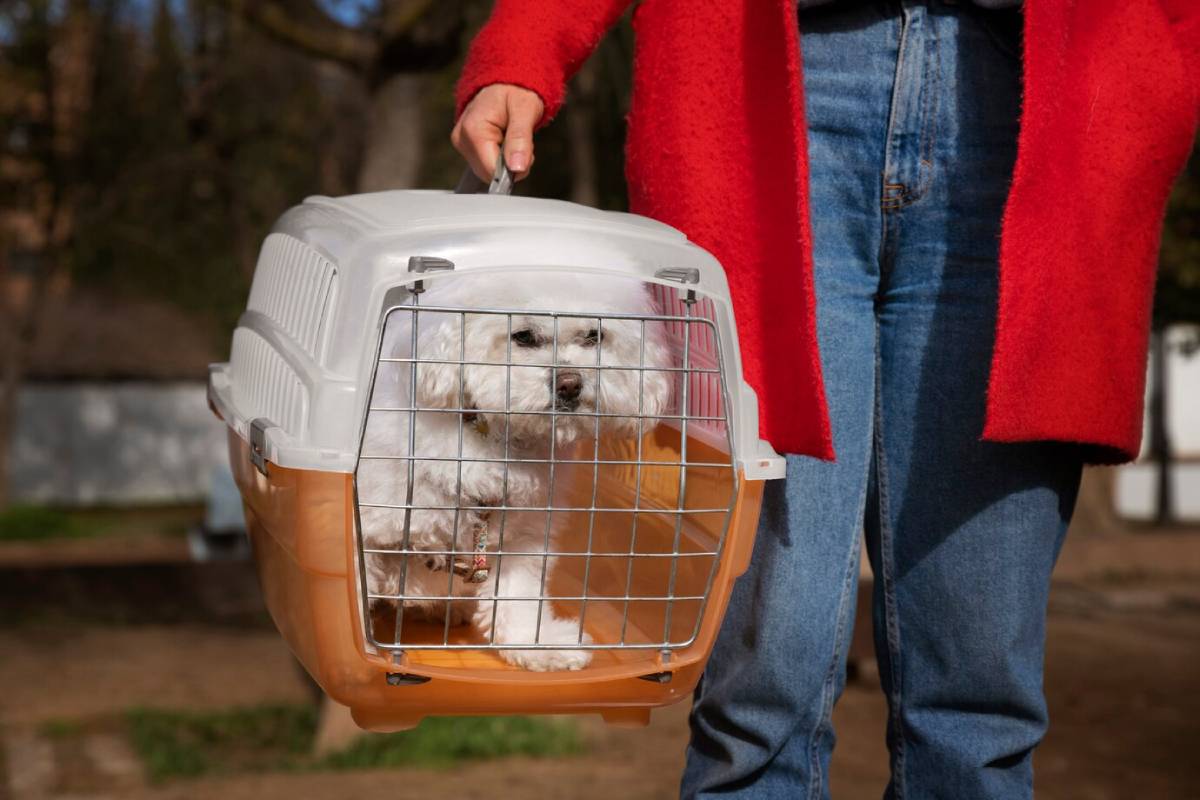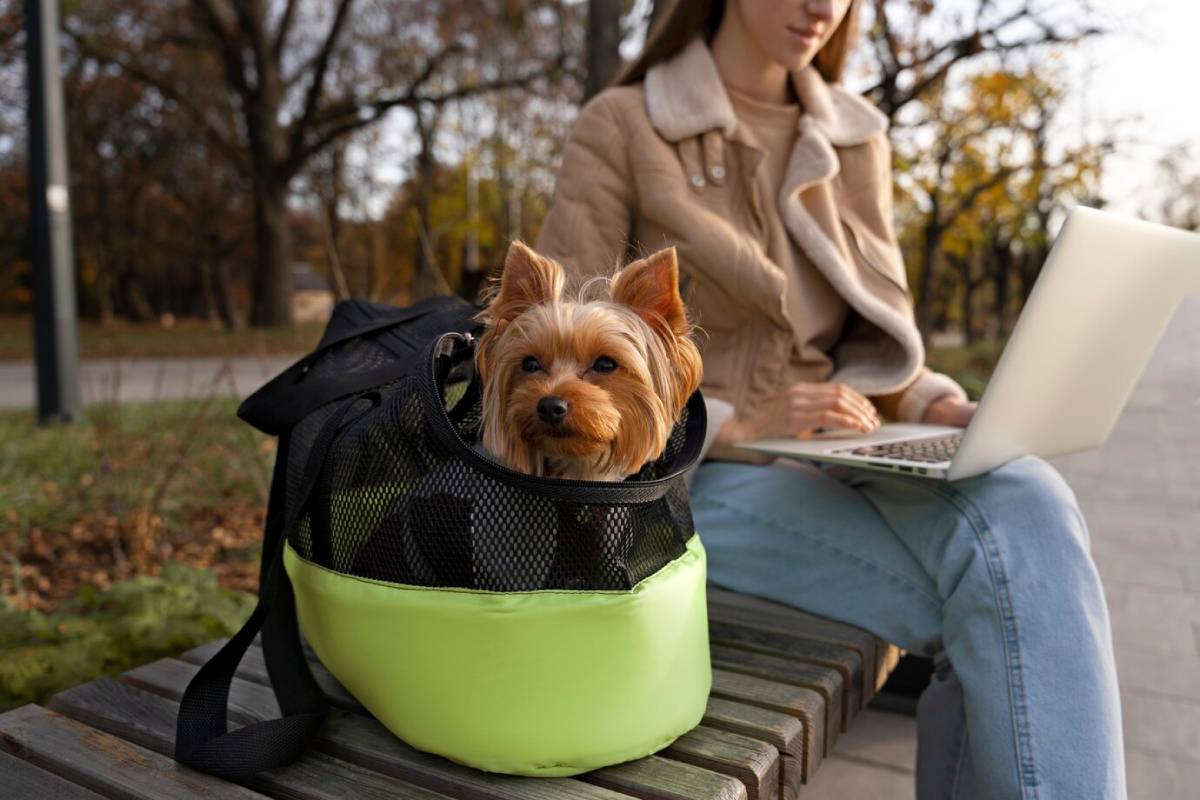
Choosing the Right Travel Carrier for Your Dog or Cat
Whether you’re heading to the vet, taking a road trip, or preparing for air travel, a good carrier is essential for safe, comfortable pet transport. But with so many styles and features available, selecting pet crates or carriers that suit your pet’s size, temperament, and travel needs can feel overwhelming.
The right pet travel carriers not only provide security and ventilation but also help reduce stress and anxiety during journeys. In this guide, we’ll explore how to choose a carrier that keeps your dog or cat safe, secure, and at ease—wherever the road or sky may take you.
Why a Quality Carrier Matters

A well-designed carrier offers:
- Safety during transport, protecting pets in the event of sudden stops or turbulence
- A familiar, enclosed space that reduces stress in unfamiliar environments
- Ease of movement for owners during travel
- Compliance with transport regulations, especially for flights
An inappropriate or uncomfortable carrier can lead to fear, escape attempts, or even injury. Investing time into choosing the right one is a key part of responsible pet travel planning.
Types of Pet Travel Carriers
There are several carrier styles, each suited to different scenarios:
Soft-Sided Carriers
Best for: Small pets, short car journeys, in-cabin air travel
- Lightweight and easy to carry
- Often collapsible for storage
- Comfortable with mesh ventilation panels
- Maybe airline-approved (check size limits carefully)
Not suitable for pets that chew or scratch excessively, or for cargo travel.
Hard-Sided Crates
Best for: Larger pets, air cargo travel, car safety
- Durable plastic or fibreglass shell
- Provides solid protection and security
- Often IATA-approved for checked airline travel
- Easy to clean and harder to escape from
Ideal for nervous travellers who feel more secure in rigid surroundings.
Backpack or Sling Carriers

Best for: Small cats and toy breed dogs on walks or short trips
- Worn on your back or shoulder
- Great for outings or short travel with close contact
- Limited use—not suitable for long trips or flights
Only use these if your pet is comfortable being carried close and enclosed.
Wheeled Carriers
Best for: Airports and stations, larger small pets
- Reduces strain on the owner
- Keeps pets level and stable while moving
- Many models convert between wheels and backpack modes
Ensure your pet’s movement is minimal during use and that the base is firm and supportive.
Sizing: Getting the Fit Just Right
The most important factor in choosing any pet carrier is size. Your pet should be able to:
- Stand up without crouching
- Turn around comfortably
- Lie down in a natural position
A carrier that is too small causes distress, while one that’s too large can lead to safety issues (especially in car or air travel). Always measure your pet’s length and height before purchasing, and consult manufacturer guidelines.
For air travel, especially in the cabin, carriers must meet airline-specific size restrictions—typically small enough to fit under a seat.
Key Features to Look For
When selecting pet crates or carriers, consider the following:
- Ventilation: Mesh panels or air holes on multiple sides are essential for airflow
- Secure fastenings: Zippers or locks that prevent escape or accidental opening
- Sturdy handles or straps: Comfortable to carry, lift, or roll as needed
- Leak-proof base: Especially for longer trips or nervous pets
- Interior padding: Removable, washable lining for comfort and hygiene
- Top-loading access: Easier to place or remove nervous cats or small dogs
- Visibility: Choose whether your pet prefers more coverage (for privacy) or visibility (to see you and your surroundings)
Also, consider how easy the carrier is to clean and whether it folds or stores neatly.
Carrier Training: Preparing Your Pet for Travel
Once you’ve chosen the right carrier, it’s important to help your pet feel comfortable in it.
Steps for carrier acclimatisation:
- Leave the carrier out in your home with the door open.
- Add treats, toys, or a blanket with your pet’s scent inside.
- Encourage short periods of time spent in the carrier, gradually increasing duration.
- Take practice trips around the house or in the car.
- Use positive reinforcement—praise or treats when they enter or relax inside.
Never use the carrier as punishment—keep it associated with calm, positive experiences.
Special Considerations for Air Travel
For flights, your carrier must comply with airline pet travel policies.
- In-cabin: Carrier must fit under the seat in front of you and meet maximum dimension requirements
- Cargo hold: Hard-sided, IATA-approved crates with secure doors and food/water containers are essential
- Health certificates: It may be required; check your airline and destination country’s regulations
Book flights in advance and notify the airline that you’ll be travelling with a pet to confirm requirements.
Top Tips for Comfortable Pet Transport
- Label the carrier with your contact details and emergency info
- Line the base with absorbent pads or bedding
- Keep the carrier ventilated but cosy—don’t overdress your pet or overstuff the interior
- Use familiar items to provide comfort (a favourite toy or worn T-shirt)
- Avoid feeding right before travel to reduce nausea
- Check your pet often during stops (if safe and permitted)
Long journeys are easier for both of you when your pet feels safe and secure inside their travel space.
Final Thoughts: Comfort and Safety on Every Journey

Choosing the right pet travel carriers is about more than size and style—it’s about ensuring comfortable pet transport every time you leave home. Whether you’re off to the vet or boarding a plane, the right carrier gives your pet a sense of security and gives you peace of mind. For air travel, especially in the cabin, carriers must meet airline-specific size restrictions—typically small enough to fit under a seat.
By selecting pet crates that suit your pet’s size, temperament, and travel plans, and by taking the time to acclimate them properly, you’ll turn what might be a stressful situation into a calm, controlled experience.
Travel should be an adventure for both of you—and it all starts with the right carrier.


